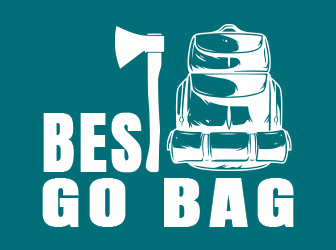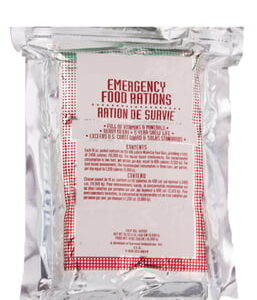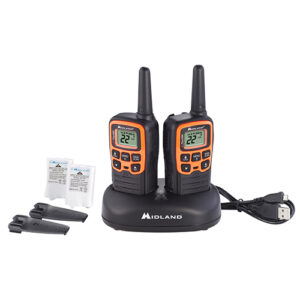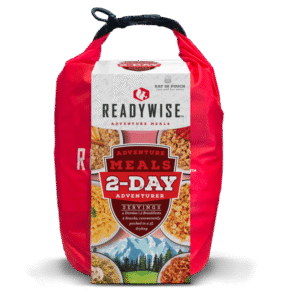Major Misconceptions About Canned Meat
We’ve all seen the images of survivalists’ basement food stockpiles. Their stash is loaded with hundreds of canned foods including soups, vegetables, fruits, and meats.
Due to some unfounded myths about canned food, it’s gotten a bad name in some circles. Today I’m going to tell you why that’s unfair.
The truth is, canned food can make for a great addition to your emergency food supply. And when those cans are kept in a cool, dry, and dark place away from pests, they can hold food that stays good beyond their “use by” dates.
Not as nutritious?
So, let’s take a look at a few of the misconceptions many people have about canned food including meat.
One myth is that canned food is not as nutritious as its frozen and fresh counterparts. But the Academy of Nutrition and Dietetics tells us that’s just not true.
Assuming the food placed into those cans was at the peak of its nutrition and tastiness, there’s no reason why it can’t stay that way for a number of years. Especially because cans provide a secure home for it.
Fruits and vegetables, for example, are washed and sometimes cut, chopped, or pitted before canning. Lids to the cans are sealed tightly. The can is then heated to kill harmful bacteria, then quickly cooled.
Short shelf life?
Another misconception about canned food is that it only stays good for a short amount of time. And that when the use-by dates are only a few months to a couple of years from the date you purchased them, frequent stockpile rotation is required.
But according to some food experts, canned food can stay good for much longer periods of time. Yes, eventually its nutritional value will decrease over time. And taste and texture won’t be the exact same as when it was first canned. But it could still be safe to eat.
Assuming the cans are in good shape (no rust, swelling, dents, leaks, etc.), some say canned tomatoes can maintain their quality for 18 months beyond the use-by date.
Other canned items such as meat and vegetables, having low acid content, could stay good for two to five years.
Use-by date expirations?
It’s important to understand that a use-by date does not mean a person who consumes food from that can will drop dead if they eat it after that date.
It usually just means the manufacturer cannot guarantee the product will be at its tastiest following the use-by date.
In other words, use-by dates are more about quality than safety. There are other ways to determine if your canned food is still good.
An opposite misconception that some people have about canned food is that it will last forever. Of course, that is not the case. If your canned food is more than a few years past its use-by date, it’s better to toss it out.
Canned meat is long-lasting
Another misconception is that canned meat is dangerous to eat due to the possibility of botulism.
The truth is that meat will last longer in a can than many other foods due to its low acidic volume.
This is true for all sorts of meats, including poultry and fish. Other low-acidic foods including stews, pasta products, vegetables, and soups (other than tomato soup) also have longer shelf lives.
Canned food with high acidic volume will not last as long. Shelf life is more like 12 to 18 months for tomatoes, juices, pickles, sauerkraut, and fruits.
Storage warnings
So, what is the best way to store canned food including meat so that it will stay as good as possible for as long as possible.
As previously mentioned, a cool, dry, and dark place is best. Warmth, moisture, and light can all shorten the shelf life of canned food.
In other words, keep canned food away from under a sink, above a stove, or in a damp garage or basement, as well as out of a shed.
Even if a canned food item has been stored in a safe place, take a good look at the can before you open it if it’s been a while since you stored it. Watch for cracks, denting, swelling, or rust. And smell the food once you’ve opened the can.
Your canning guidelines
Finally, what about foods you can yourself? Will it have as long of a shelf life as canned foods you buy in the store?
Probably not. Unless you own machinery that hermetically seals cans, you’re probably looking at about one year of shelf life. And again, that’s only if you store it properly after it’s canned.
If you’re canning food, make sure you boil high-acid foods for at least 10 minutes before canning. Increase that to 20 minutes of boiling for low-acid foods.
Either way, once you’ve opened your can and enjoyed some of the food, its refrigerator life is probably no more than three or four days.
No matter what misconceptions you’ve heard about canned food including canned meats, don’t be afraid to make it part of your survival stash.
Putin Pulls Plug on Pact… Population Prepares for Pain
Ukraine has been dubbed “the breadbasket of Europe.” That’s due to the tens of millions of tons of grain, corn, wheat, barley and other food products it ships to more than 40 countries.
One of the biggest concerns countries around the world had when Russia began its invasion of Ukraine early last year was their ability to continue receiving grain and other food products.
With Russian President Vladimir Putin’s recent refusal to renew an agreement that allowed food shipments from Ukraine, those fears are being realized once again.
Among the problems this could cause for Americans and those in other countries are supply chain disruptions, food shortages, and higher prices.
The now-expired agreement, known as the Black Sea Grain Initiative, involved Russia’s promise not to attack Ukraine’s food-carrying ships. But now, will those ships be allowed to leave Ukraine safely?
Deal Was Good While It Lasted
For the past year, the deal helped to at least delay the worsening of global hunger. United Nations Secretary-General António Guterres called it “a beacon of hope” when it was established.
Now, all bets are off. If grain and other food products are not allowed to leave Ukraine, many countries will be negatively impacted and millions could starve. Where grain is available, prices are likely to soar.
The Black Sea Grain Initiative, which had been brokered by Turkey and the UN, allowed food shipments from three Ukrainian ports without Russian interference.
During the past year, ships from those three ports made more than 1,000 voyages and carried about 32.8 million tons of food. That’s according to the Joint Coordination Center in Istanbul, Turkey.
Russia Calls Agreement End a ‘Termination’
Just prior to the end of the agreement, Turkish President Recep Tayyip Erdogan said he and Putin were on the same page regarding the deal. And that he was confident the Russian president would renew it. Not so fast.
Dmitry Peskov is a Kremlin spokesperson. He said the UN has not lived up to its part of the agreement. Sanctions against Russia have resulted in the country’s inability to export as much of its food and fertilizer as it would like.
Peskov told the Associated Press, “When the part of the Black Sea deal related to Russia is implemented, Russia will immediately return to the implementation of the deal.” But another Russian official was less optimistic, calling the lack of a renewal a “termination.”
Economic experts have said Ukraine’s ability to ship grain and other food products to many countries around the world has resulted in lessening the global food crisis. And kept prices for items such as wheat and vegetable oil from skyrocketing.
Ukraine Will Call Russia’s Bluff
Guterres said he fears that the ending of the deal will result in more human suffering. But that he’s determined to keep working to continue the flow of food out of Ukraine. He said, “There is simply too much at stake in a hungry and hurting world.
The response from the United States also centered around human suffering. John Kirby, White House national security spokesman, said Russia’s decision would “harm millions of vulnerable people around the world.”
So, the first big question now is, will Ukraine continue to attempt to ship grain and other food products from those three designated ports?
Ukraine President Volodymyr Zelenskyy said that is exactly what will happen. “We are not afraid,” he said. He added that shipping companies have told him they’re willing to continue.
Black Sea Area Becomes ‘Dangerous’
How Russia will respond to continued food shipments is the second big question. Putin has repeatedly demonstrated that angering the rest of the world does not concern him.
And right on cue, the Russian Foreign Ministry declared the northwestern Black Sea area “temporarily dangerous.” A Russian political analyst suggested that Putin may order a strike against a Ukraine port or the placement of mines in shipping routes.
By limiting the amount of wheat and other food products exported by Ukraine, Russia could increase demand for its own exports.
Simon Evenett is a professor of international trade and economic development at the University of St. Gallen in Switzerland. He said Russia’s refusal to renew the grain deal allows the country to “weaponize” its wheat exports.
In addition to limiting competition, Russia could raise export taxes for the purpose of financing its military campaign in Ukraine.
Food Shortages & Higher Prices Expected
The Black Sea Grain Initiative has been renewed three times, but apparently Russia feels that’s enough. If Ukraine is prevented from shipping grain and other food products, the result is likely to be a major increase in global hunger and higher prices everywhere. Including in the U.S.
Adam Hodge is a spokesperson for the U.S. National Security Council. He said, “Russia’s decision to suspend participation in the Black Sea Grain Initiative will worsen food insecurity.”
Prior to the start of the war, Ukraine was the world’s largest exporter of sunflower oil. It was also among the world’s top three exporters of barley, maize, and rapeseed oil, and the fifth largest wheat exporter.
If Putin threatens the safety of ships leaving Ukraine with grain and other food items, there will be a global outcry. But will he care? History tells us the answer is no. It also tells us food shortages and higher prices are sure to follow.
Where Does Your State Rank in Water Quality?
“Our aging water infrastructure, particularly lead pipes, solder and faucets, represents a community health hazard of enduring significance.” That statement came from the Department of Civil and Environmental Engineering at the University of Iowa.
While the quality of tap water in America is far from ideal – and can represent a danger to our health – there are ways to improve it in your home. I’ll get to those ways in a moment. And I’ll let you know if your state is one of the 10 worst for water quality.
First, I want to remind you that many states have water distribution systems with an average pipe age of 50 years. Some networks have subsystems more than 100 years old.
Thousands of pipes running from water mains to homes are made of lead. Not to mention the fact that plumbing inside old houses contains lead pipes, pipe joints with lead solder, and brass faucet fixtures containing lead.
When pipe deposits break free, small particles of lead leach into our tap water. And lead is just one of hundreds of harmful water contaminants. In fact, lead can cause serious damage to organs and interfere with the body’s normal processes.
An ‘Immoral’ Action
One of the reasons water quality remains a problem in the 21st century is that water main work frequently falls short of completion.
Road crews often leave some lead pipe in the ground when they replace part of it with copper pipe. Water experts say that has occurred hundreds of thousands of times in America.
City officials who don’t want to spend money to remove all lead piping say chemical treatments will take care of any problem. Some officials who want to get rid of all of it say they don’t have the budget for it.
Yanna Lambrinidou is a medical anthropologist at Virginia Tech University. She told the Associated Press, “I can’t but think of partial replacements as immoral because they involve a witting decision by government agencies to leave residents at continued risk of exposure.”
Where Does Your State Rank?
So, how do you know if water coming out of your faucets is safe to drink? There are ways to test it, but first let’s look at an analysis by J.D. Power.
In a recent report, the data analytics, software, and consumer intelligence company ranked states according to their water quality. They used feedback from water utility customers regarding quality and reliability, as well as other criteria.
According to their data, states with the worst tap water quality were Indiana (10th worst), Arizona (9th), Mississippi (8th), Ohio (7th), and Pennsylvania (6th).
Texas ranked as the 5th worst state for water quality. Next were New Mexico (4th), Oklahoma (3rd), Maryland (2nd), and – drum roll, please – Alabama with the worst.
Test It & Filter It
If you live in one of those states – or if you just want to make sure your water quality is good enough – ask your local health department if they have free water testing kits available.
If not, you could ask them to come to your home and check it. Especially if you express concerns about it.
Once you’ve done that, it would be a good idea to invest in a filter. There are plenty on the market. But do some research to make sure you’re acquiring one that gets rid of contaminants most likely to be found in your area.
The better filters will dramatically reduce a wide variety of contaminants. Including bacteria, viruses, volatile organic chemicals, pharmaceuticals, pesticides, and herbicides. As will heavy metals like lead, mercury, chromium, copper, and aluminum.
More Tips & Tricks
In addition to using filters, there are a few other tips and tricks you can try. One is to let cold water run a couple of minutes before you fill up a glass to drink.
This is most important when you haven’t used that particular tap for two or more hours. That’s because water quality can decline when it’s sitting dormant in pipes.
Even common activities such as flushing toilets, showering, laundry, and running your dishwasher help by keeping water moving through your pipes.
Another tip is to always use cold water for drinking and cooking. Knowing they’re going to heat water for cooking, some people will fill a pan with hot water. But hot water can dissolve contaminants such as bacteria, metals, and sediment.
Get Your Back Into It
These next few suggestions require more time and effort. But they are worth it to ensure the water coming out of your faucets is safe for consuming, bathing, and cleaning.
If the plumbing in your home is old, it’s more likely to contain lead. By replacing galvanized plumbing with copper pipes, your plumbing will be virtually lead-free.
Clean faucet aerators regularly and replace if needed. It doesn’t take long for metals and sediment to collect in those screens.
Finally, drain your water heater annually. The tank is another place where bacteria, metals, and sediment can collect. And this can negatively affect both your water pressure and quality.
Peace of Mind You Can Taste
Safety is the first thing we think about when it comes to water quality. After all, nobody wants to get sick from drinking contaminated water.
But taste is another issue. Clean water tastes better than contaminated water. Which means you will drink more of it, which in turns means you’ll stay better hydrated.
Another great reason for making sure your tap water is safe is the peace of mind you’ll get from knowing you don’t have to worry about it.
It’s difficult to put a price tag on that.
Will Recent Extreme Weather Events Continue?
Major storms including tornadoes in the Plains and Southeast… flooding in the Northeast… severe heat in the Southwest… wildfires in the West and Northwest.
All of these severe weather events have occurred in just the last few months. And we’re only halfway through summer.
Unfortunately, there will be plenty more wild weather to come this year. With inevitable power outages and evacuations to follow.
Let’s take a quick look back at some of the relentless weather episodes we’ve seen recently. Then we’ll examine what still is likely headed our way.
Tornadoes Struck Early & Often
It didn’t take long for 2023 to show us what we were in for this year. According to the National Weather Service Storm Prediction Center, January produced the third most tornadoes of any January in recorded history in the U.S.
February was nearly as bad for twisters in America. And by early April, 63 tornado-related deaths had been recorded. That’s about three times the national average for the first 100 days of the year.
These statistics change often, but the latest count for the U.S. is 883 confirmed tornadoes in 2023. This includes 112 EF2 tornadoes (111-135 mph winds), 26 EF3’s (136-165 mph), and 2 EF4’s (166-200 mph). Those wind speeds are equivalent to what we see in major hurricanes.
The worst tornado outbreak of 2023 occurred March 31 and April 1, affecting multiple states. Including Arkansas, Missouri, Tennessee, Illinois, and Iowa. Confirmed tornadoes totaled 147. More than 750,000 power outages occurred during the outbreak, and many whose homes were damaged were forced to evacuate.
Unrelenting Heat Suffocated South & Southwest
The recent heat wave in the South and Southwest has been the lead story in countless newscasts.
Residents of Texas, Florida, Arizona, Utah, Colorado, New Mexico, Nevada, and others were sweltering for weeks on end with no relief in sight. Phoenix, Arizona reached 110 degrees Fahrenheit for 21 consecutive days, breaking a record that had stood for nearly 50 years.
Temperatures were regularly hitting 100+ degrees in Roswell, New Mexico and Dallas, Texas. It’s almost always hot in Death Valley, California, but temps outdid even themselves recently, reaching 127 degrees. It was also 115 degrees in Las Vegas, Nevada.
Heat waves put tremendous stress on our power grids. A recent news report claimed that two-thirds of America could experience blackouts this summer due to the heat.
Tens of Thousands of Wildfires
The heat is not just unbearable for residents. It also impacts the landscape in many parts of the country, due to a lack of rain. And that makes wildfires more likely and more difficult to control.
As of two weeks ago, over 27,000 wildfires in the U.S. this year have burned more than 777,000 acres of land.
A number of large wildfires are currently being fought in states including California, Arizona, New Mexico, and Oregon. In addition, smoke from Canadian wildfires continues to blow into a large number of states.
Wildfires frequently affect electrical power stations, causing outages that take days to repair. Many homeowners are forced to evacuate when fires get too close to their homes.
Deadly Flooding in Pennsylvania
Flash forward to flash floods. Just last month, seven people drowned in flooding 30 miles north of Philadelphia, Pennsylvania. Severe thunderstorms affecting millions of people across the Northeast from Maryland to Maine produced the deadly flooding.
A 32-year-old mother drowned while trying to save her 2-year-old daughter and 9-month-old son, both of whom also tragically perished. Her 4-year-old son was saved by his father, and a grandmother also survived. The others who drowned ranged in age from 53 to 78.
The Upper Makefield Township Facebook page called it, “a mass casualty incident the likes of which we have not seen before.”
Flooding from storms is often accompanied by downed trees and electrical wires, with power cut off and some forced to evacuate as their homes become flooded.
Hurricane Predictions Amp Up
What can we expect for the remainder of summer and into the fall? More of the same, I’m afraid. Weather experts predict continued high temperatures for much of the country.
Wildfires almost always hit their peak in late summer and early fall. And while the number of tornadoes may decrease, we’re smack-dab in the middle of hurricane season.
The El Niño weather pattern traditionally suppresses hurricane development. But here’s what Weather.com says about the situation: “The 2023 Atlantic hurricane season may be one of the most active for any El Niño season on record, due to record-warm Atlantic Ocean water temperatures.”
The Weather Company recently increased its hurricane prediction for the rest of this season. It now includes a projected 20 total storms. Ten of them are expected to become hurricanes and five are anticipated to reach at least Category 3.
As we’ve seen from past hurricanes, blackouts and evacuations are an inevitable consequence.
Outages & Evacuations Are on the Horizon
What do increases in severe weather events mean for the average American?
Basically, they mean the likelihood of power outages goes up. With some of those outages possibly lasting longer than normal if storms are severe enough. And that makes having backup power more important than ever.
For some folks, it could mean a temporary evacuation. Wildfires and hurricanes have a bad habit of doing that.
We see it over and over again. Extreme weather isn’t going away. In fact, it’s likely to increase. But for those who prepare for it, peace of mind overcomes worry.
Unusual Ways to Start a Fire
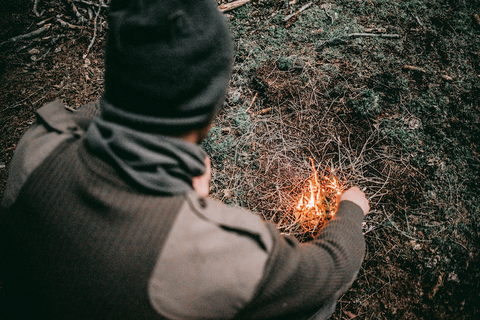
There could come a time in your life when you need to make an outdoor fire. Perhaps for cooking or warmth. Maybe for light or purifying water. Possibly even for protection from animals or attracting the attention of rescuers.
Do you know how to do it? What if there were no dry wood available and you didn’t have a lighter in your backpack?
Knowing a variety of ways to start a fire could come in handy someday. It could even be a lifesaver. Better to have this knowledge and not need it than not have it and need it.
Today I want to discuss a variety of unusual ways to start a fire, including a few you may never have considered before.
Fire’s three friends
First though, let’s review a few things about fire. Just as we need fire to survive, fire needs things to thrive. They are fuel, oxygen, and ignition.
Fuel for a fire is pretty much anything that will burn. The slower it burns, the better. For cooking, items such as wood, various grasses, and dry manure work best.
Oxygen keeps a fire going. And the air surrounding fire is usually adequate for that. Except for some situations when the immediate area is too tightly confined.
Ignition methods are plentiful. But most of them are not easy to accomplish. The easiest ways to start a fire are by using a disposable cigarette lighter or a magnesium starter stick.
Tinder & kindling
As far as fire-starting materials are concerned, you want to make sure you have tinder and kindling. Long-term fuel can also be very useful, but you might not have that with you.
Dry paper is great for tinder. But if you need to depend on what you find in the wild, you’ll want to gather some or all of the following:
- Finely-shaved dry wood or bark
- Dry grass or leaves, shredded if possible
- Bundles of dried bird or rodent nests
- Dry tree moss (also known as “Old Man’s Beard”)
- Dry plant seed fluff, such as cattail heads
Kindling burns more slowly and can keep a fire going for a while. It includes sticks, twigs, bark, and dried grasses that have been bundled.
Your best long-term fuel is logs. They will burn better and longer if you split each one several times. Dead branches also work.
Choose the right matches
Returning to our ignition methods for a moment, here are two items you should have with you in the wild. Even if they’re not your primary fire starters:
- Waterproof matches. You can find these at sports outlet stores. They work very well, although they’re somewhat expensive and should be rotated out every few years.
- Stick matches. They’re better than paper book matches, but need to be rotated out every six months or so. You also need to keep them dry.
As mentioned, your two easiest fire starters are magnesium sticks and cigarette lighters. A mag stick can be used about 100 times. They’re perfect for outdoor usage because they’re waterproof. And they don’t age or freeze.
9 unusual fire-starting methods
Following are 9 of the more unusual ways to start a fire. You may want to choose one of these methods if you don’t have the materials previously discussed.
9V battery & steel wool. Keep a container of lint from your dryer in your backpack. Fluff up your steel wool to get some air in it. Then touch it all over with the positive and negative terminals of a 9-volt battery to spark a fire. Continue to touch it in multiple places, then add the lint as tinder and blow on it softly.
Aluminum can & chocolate bar. Rub a candy bar on the bottom of an aluminum can until the can bottom shines like a mirror. With direct sunlight on the can bottom, it will heat up to the point where it can ignite your kindling when held against it.
Sandwich bag & water. Crush a piece of dry tree bark into a powder. Place the powder onto a solid piece of bark. Pour water into a sandwich bag until it’s half-full. Tilt the sealed baggie to the side and then twist it at the top, making it into a liquid sphere. Use the baggie as a magnifying glass over the powder until the sun’s rays make it start smoldering. Then press the powder onto your kindling.
Vaseline & cotton ball. Pull a cotton ball apart – but not completely apart – and rub Vaseline or petroleum jelly all over it. Roll the cotton back into a ball. Use a magnifying glass or reading glasses and the sun’s rays to heat the cotton ball, which will hold a flame well once ignited.
Gum wrapper & battery. While you’re chewing a stick of gum, cut the foil it was wrapped in into a bowtie or hourglass shape. With two fingers of one hand, hold the two ends of the foil against the ends of a small battery. The foil will ignite and you can quickly light your tinder.
Dead lighter & paper. Maybe you were planning to use a lighter to start a fire, but it died on you. Not to worry. Remove the lighter’s safety lock and slowly roll the lighter over paper, back and forth. As the steel wheel grinds down on the flint rod, flint shavings will be created. Form those shavings into a small pile and then flick your dead lighter repeatedly over the pile until it ignites.
Water bottle or balloon. Lay a clear plastic bottle full of water on its side with the cap on. Then place dark-colored tinder in the beam of sunlight that passes through the bottle. Once the tinder begins to smolder, place it into your fibrous tinder and blow on it softly. You can do the same with a balloon filled with water.
Citrus fruit. Because citrus oils are flammable, you can set it on fire if you can generate some sparks. Take a citrus fruit such as an orange, carve out a hole on the top and clear out some of the flesh. Let the orange dry out. Now push a small rock into the hole and rapidly rub a tool such as a knife on it until it sparks.
Flashlight. After removing the top lens of a flashlight, pull out the reflective cone that the light bulb rests in. Put dried moss or grass into the spot where the bulb was and place the cone in direct sunlight. Eventually the sunlight’s reflection will heat the tinder enough to cause it to burn.
Just as fire can be your best friend, it can also be your worst enemy. Yes, it can protect you, but it can also kill you.
When contained, fire can be controlled and used however you want. But when it escapes containment, it can destroy thousands of acres of forest, land, and buildings.
Fire can save your life, but only if you learn how to create it and control it.
Creating Light With Odd Household Items in a Blackout
Preparing for an uncertain future sometimes means learning valuable lessons from the past. One of those lessons is discovering ways to provide light without electricity.
Today I want to discuss several ways you can light your home during a blackout.
It’s difficult to imagine now, but for the vast majority of human existence, people did not have electricity to light the inside and outside of their dwellings. As recently as 100 years ago, only about one-half of American homes enjoyed electrical power.
Electricity is a huge help to us as we cool and heat our homes, provide light, and use appliances. But with heat waves and storms frequently striking our vulnerable electric grid, the number and duration of power outages are on the rise.
Candles
Perhaps the most obvious way to light the inside of your home is with candles. Obvious, but not particularly safe. In addition to the fire hazard, paraffin-based candles can produce toxin-filled smoke you and your family do not want to breathe.
You’re better off using safer candles including those made from beeswax, soy wax, or coconut wax. Regardless of what kind of candles you use, be sure to have non-flammable holders for them.
And here’s a little trick you can use to amplify your light from a candle. Fold a large piece of aluminum foil so that it’s standing. Place it near (but not too close) to your candle.
When a candle is lit in front of it, light from the fire will reflect off the foil for additional illumination.
Oil lamps
Oil lamps are another option for lighting your home. They can be fueled with kerosene, olive oil, lamp oil, or even animal fat. The same open-flame concern exists here as with candles, so be sure to use caution.
Kerosene can put off a strong odor. So it should only be used in a well-ventilated room. That’s more challenging during cold weather.
The brand of oil you use should be labeled as smokeless, non-toxic, and safe for indoor use. In other words, a clean-burning oil.
As far as the lamp itself is concerned, you can choose from tabletop lamps to wall-mounted lamps to hanging lamps and reading lamps. Make sure you have plenty of extra wicks on hand.
Flashlights, etc.
Flashlights are a good choice when you are suddenly left powerless by extreme weather or another cause. Their portability is an advantage. But make sure they are in working order and are kept in easily accessible places.
Some people like to keep a small LED flashlight by their bed. And if you have solar-powered flashlights, you won’t have to worry about replacing batteries. Other battery-powered light sources include some lamps and lanterns.
There are no odors or fumes to worry about with these items. Headlamps are especially advantageous when you need both hands to work on something and require light.
Safety is another benefit with flashlights and battery-powered lamps and lanterns. Your kids or grandkids can handle them with ease. Use rechargeable batteries with your flashlight to save money in the long run.
Solar lights
Solar lights may be better known for their outdoor usages. But there’s no reason why you can’t use them indoors when needed as well.
Especially by placing them strategically in your home to light up dark areas.
Some people place their solar lights outdoors during the day to soak up plenty of sunlight. Then they bring the lights indoors when darkness sets in. This saves on electric bills and comes in very handy when the power goes out.
There are many ways to light up your home during a power outage. But solar lights are your safest and most cost-effective option.
[VIDEO] Jan Tries Survival Meat?
Jan gives a review of the Gold Medallion All-Meat Survival Food Kit. In a true emergency situation, protein is key to your survival. You need it to keep your energy up & fight off hunger. This kit is the perfect way to round out any food storage plan, and good to have on-hand for a quick, comfort meal in minutes.
The Inside Scoop 🎬:
- Jan from Nevada reviews the Gold Medallion All-Meat Survival Food Kit from 4Patriots.
- This kit contains protein packed dehydrated chicken and dehydrated beef.
- Jan uses this kit to complement her bone broth diet, adding them in the last hour to 30 minutes of slow simmering with vegetables.
- She highly recommends 4Patriots’ Gold Medallion All-Meat Survival Food Kit as a great addition to one’s stockpile for emergencies or daily use.
Transcript 🎞️:
“Hi, folks! This is Jan to tell you about the recent purchase I made from 4Patriots.
I got the dehydrated protein packs for the dehydrated chicken and the dehydrated beef. And I can tell you, they’re fabulous. What is that all about? For me it’s keeping me on a restricted diet. They’re wonderful additions to my bone broth diet. I put that in at the last hour to 30 minutes with my vegetables and the slow simmered broth makes for a wonderful delightful addition to my diet. 4Patriots has you covered, and I recommend that you try it out. It’s a great addition to your stockpile for emergencies or for daily use. Thank you for hearing me out and enjoy.”
* Real reviews from real customers. Sometimes customers receive a free product to test or receive a free product as a thank you for submitting honest feedback. For more information see Terms & Conditions: https://4patriots.com/pages/compensation-disclosure-policy
4th of July Set Global Heat Records
Think back a few weeks ago to the 4th of July. Did you spend any time outdoors that day? If so, I’m guessing you were warm. Maybe hot. Perhaps sizzling.
Why do I say that? Because scientists are telling us that July 4th was globally one of the hottest days in about 125,000 years.
At the minimum, it was Earth’s hottest day since at least 1979. Thanks to the start of summer in the Northern Hemisphere and the return of the El Niño weather pattern.
According to the U.S. National Centers for Environmental Prediction, the average temperature around the world on July 4 was 62.92 degrees Fahrenheit.
If you’re thinking, “Hey, that’s pretty comfortable,” keep in mind that was the average for the entire globe. Including the North and South poles, where temps were right around minus 60 degrees.
It’s Hot All Over
Of course, July 4 was just one day this summer. As I’m sure you’ve seen often on the news lately, temperatures have been soaring in many parts of the country. And remaining high for weeks on end.
More than 100 million Americans have been exposed to dangerous heat on a regular basis over the last few weeks. Those in Phoenix, Arizona, for example, have been sweltering for weeks. Recently they hit the 110+ degree mark for the 15th consecutive day, with no relief in sight.
Dallas, Texas and Roswell, New Mexico were both over 100 degrees on a daily basis, and it reached 115 degrees in Las Vegas, Nevada. In aptly-named Death Valley, California, it was 127 degrees.
China was also in the middle of a blazing heat wave, with Beijing hitting a record 104 degrees. The temperature reached 122 degrees in northern Africa, and it was even warmer than usual in the Antarctic.
Studying Tree Rings & Ice Cores
So, how did scientists come up with that “125,000 years” figure? Even if humans were around that long ago, I’m pretty sure they did not own weather instruments.
And global temperature records based on weather instruments only go back as far as the mid-19th century.
To determine weather patterns for hundreds and thousands of years prior to that, scientists base their estimates on tree rings and ice cores. So, it’s hardly an exact science, but they believe they can get a grip on it.
Paulo Ceppi is a climate scientist at the Grantham Institute in London, England. He says tree rings and ice cores “tell us that it hasn’t been this warm since at least 125,000 years ago, which was the previous interglacial (period).”
Temps Keep Creeping Upward
And the worst news is, according to weather scientists, it’s just going to keep getting hotter. Myles Allen is a professor of geosystem science at Oxford University.
He says that the world’s temperature has been rising at 0.25 degrees Celsius per decade. Doesn’t sound like much, but over time it adds up. Earth’s temperatures are currently about 2.25 degrees Fahrenheit higher than they were prior to industrialization.
The main culprit right now is the El Niño weather pattern, which recently returned for the first time since February-August 2019. That pattern was rather short and weak, but it can last as long as two years or more before La Niña reappears.
The El Niño pattern generally means oceans are releasing heat into the atmosphere, where that heat gets trapped.
June Established World Heat Record
As a result, the month of June was the hottest ever recorded globally. And for the first half of the year, 2023 is currently the third warmest year on record. The year 2016 currently holds that dubious record.
All the numbers are not yet in for July, but it might have approached the same type of record. Of course, August is always a very hot month, and September has been getting warmer in many parts of the world in recent years.
If you’ve been dipping your toes into the Atlantic Ocean this summer, you might have noticed it’s warmer than usual. The concern is that it’s much warmer than normal.
In the North Atlantic, temps are about 9 degrees higher than average. Which marks the highest they’ve been for more than 170 years.
Entering ‘Uncharted Territory’
Carlo Buontempo is director of Europe’s Copernicus Climate Change Service. He said, “We have never seen anything like this before. We are in uncharted territory.
In addition to heat, El Niño is known for producing surges of moisture in the form of storms that can cause flooding. But elsewhere, droughts and fires can be expected.
We can anticipate drought and extreme heart in the Southwest for the rest of the summer. As well as dry conditions and wildfires in the West and Northwest.
Of course, extreme heat means more stress on our already vulnerable electrical grids. And that means both planned and unplanned power outages.
So please take care of yourselves. Do what it takes to keep yourself and your family cool.
Is It Possible to Avoid GMOs in Your Food?
When I hear that a certain food is genetically modified, it raises a red flag for me. I’m leery of anything that is altered from what nature intended. Especially when it’s something I might put into my body.
Now, I understand not everything in modern life is perfectly natural. Most of us do not solely depend on the food we grow in backyard gardens.
With most food needing to travel to grocery stores and then sit out while on display, a few preservatives are used to keep that food from going bad before it’s purchased.
But when fruits and vegetables are grown with GMO seeds, I get concerned. I don’t want to put a bunch of laboratory GMOs in my body if I can avoid it. Even meat is affected because more than 95% of animals used for meat and dairy in the U.S. eat GMO crops.
What are GMOs?
What’s particularly worrisome to me is how many of the foods we eat on a regular basis are genetically modified. As well as the fact that we can’t see GMOs, so we’re dependent on food sellers to properly label them.
Before I get into some ways to avoid GMO foods, let’s take a quick look at what GMOs are, why they are used, and whether they’re safe.
A GMO (genetically modified organism) is a plant, animal, microorganism, or other organism with a genetic makeup that has been altered in a lab using genetic engineering.
The result is a combination of plant, animal, bacterial, and virus genes that do not occur in nature or through traditional crossbreeding methods.
Driven by the almighty dollar
As to why they are used, well, it’s all about economics. Generally speaking, GMOs control weeds and lessen crop loss, which saves farmers money.
For instance, GMO fruits & veggies require less fertilizer, pesticides, and water to grow, assuming they have been genetically altered to fight off drought and disease. Some GMOs merely make crops look better, which can lead to more sales.
There is great debate regarding whether GMOs are safe for consumption. Most scientists say they are…
But many consumers are not so convinced. Concerningly though, most trust the government and rarely question what they purchase and eat.
Foods likely to contain GMOs
Here’s a list of foods that are most likely to have been genetically engineered well before we see them on store shelves.
- Corn and corn-based products like corn oil, corn starch, and high-fructose corn syrup.
- Dairy products. Cows actually produce genetically modified milk. How is that possible? Because they are given genetically modified growth hormones rBGH or rBST to increase their milk production.
- Soybeans and soy products. Soy is genetically modified even more than corn is. This includes soy protein, soy flour, and soy lecithin. Soy is frequently used as an additive in various foods.
- Apples and potatoes. GMOs keep these foods from bruising as easily, and unfortunately, appearance is everything to some consumers.
- Aspartame. Made from GMOs, this artificial sweetener can be found in a variety of products, including sugar-free gum and diet sodas. If you use Equal and NutraSweet, you’re putting GMOs into your body.
- Canola oil – also called rapeseed oil – is made from genetically modified crops. The exception is canola oil made in the European Union.
- Sugar beets. It’s reported that about 95% of sugar beets are genetically modified.
- Papaya. A while back, a virus wiped out nearly all of Hawaii’s papaya crop. Since then, nearly all of them are grown with GMOs.
How to avoid GMOs
As we’ve seen, it’s a challenge to avoid GMOs in your food. But there are ways to limit your consumption of them.
One way is to make sure your food is locally grown. Small local farms are more likely to have GMO-free products than the big industrial farms. When in doubt, ask farmers how their food is grown.
Another way is to purchase foods that are labeled as “100% organic.” Please note the “100%” designation. It’s perfectly legal to label food as “organic” if it’s 30% or less genetically modified.
A third strategy is finding products that have “Non-GMO Project Verified” on package labeling. This wording can only be earned through independent testing. And it means that throughout the entire process – growing, harvesting, processing, storing, and packaging, GMOs have been avoided.
Regarding produce, another way to determine if it contains GMOs is to examine the sticker number on the label. If it’s a 4-digit number, it was conventionally grown. If it’s a 5-digit number beginning with 9, the produce is organic. If it’s a 5-digit number starting with an 8, it is genetically modified.
We may not be able to avoid all GMOs in our food, but we can certainly limit our intake of them if we work at it.
A Beginner’s Guide to Going Off-Grid
Technology has made our lives easier in many ways. The Internet, smart phones, smart home appliances, smart navigation systems… they’ve all helped us function better in an increasingly complex world.
But there’s a dark side to technology. Actually, several dark sides. For example, even some of the most famous people in the world are warning about the rise of artificial intelligence (AI).
Recently, Twitter owner and Tesla CEO Elon Musk spoke at the Viva Tech Conference in Paris. The world’s wealthiest person said AI could morph into something that can’t be controlled. And this could result in a “catastrophic outcome” for humanity.
“We need to minimize the probability that something will go wrong with digital super intelligence,” Musk said. “I think there’s a real danger for digital super intelligence having negative consequences.”
Technology = Less Privacy
What I believe is a more immediate concern regarding technology is how it’s invading our privacy. These days, it seems like anyone can find out just about anything about anybody with a few laptop keystrokes.
Today I want to talk about what you can do to start getting off the grid. And by that I don’t mean completely off-grid. I’m not suggesting you change your name and move to a cabin in a remote part of the country.
I just mean more off-grid than you are now. I’m referring to making it more difficult for people to find out every aspect of your life. Including who you know, where you work, where you shop, what your hobbies are, etc.
This includes reducing your digital footprint and gathering items you need to become more self-reliant. If you’re feeling nervous about the rise in technology and the giant leaps artificial intelligence is taking, this message is for you.
You Can Limit Access
As mentioned, the Internet makes it easy for everyone from government officials to cyber criminals to find out about you. Chances are, completely deleting your digital footprint is impossible.
This would involve changing your name and getting your legal name removed from all tax documents. It would involve moving somewhere remote, paying cash for everything, and avoiding facial recognition cameras.
That’s a lot of work. So, unless you’re running from the law – and you have a lot of money – you probably don’t want to go that far to get off-grid.
But you may want to limit access to your personal information. Merely reducing what others can find out about you through online research might be enough to protect you against some unwanted contact, cyberattacks, or identity theft.
OK, so let’s look at some ways you can become less traceable.
Protect Your Communication Network
The first and easiest way to start accomplishing this is by deleting your social media accounts. If you don’t want to do that, at least remove personal information from them. Including where you live, where you work, etc.
Next, assuming you wish to continue using your smart phone and computer, you’ll want to encrypt your network. After determining which of your devices are connected, encrypt them to encode the data transmitted over your network.
Depending on your level of technological expertise, you may have to hire someone to do this. While they’re at it, ask them to install a more protective operating system, if necessary. Windows, for example, is vulnerable to security breaches.
Your browser may also be less secure than you’d like. One of the least safe browsers is Internet Explorer.
Delete Old Accounts & Apps
Your next step is to delete old accounts you no longer use. You may have to go through old emails to remember some of them.
Deleting any apps you don’t need is another action to take. You may have unknowingly agreed to allow companies owning those apps to use your personal data.
For apps you want to keep, make sure they have strong privacy settings. And ensure you can opt out of providing them with personal information.
Shopping online has become commonplace and has its advantages. You may not want to end this habit, but make sure places from which you make purchases are committed to your privacy.
7 More Actions to Take
Earlier I mentioned going off-grid does not necessarily mean changing your name and moving to a remote part of the country. But if you’re really serious about going off-grid, relocating might be an option for you.
Even if you don’t choose to move at this time, there are a number of other things you can do to gain more privacy and self-reliance while preparing for emergency situations.
- Think about where you may want to relocate to someday. Read up on areas that interest you, learning more about the climate, land availability, and building codes.
- Start (or continue) going solar. Perhaps that means solar panels on the roof of your home or in your yard. Maybe even a solar-powered generator or a wind turbine.
- Stockpile as much clean drinking water as you have room for. Just as important, make sure you have ways to filter water from your faucets and surrounding bodies of water.
- Store a significant amount of long-lasting survival food. There is no way to overemphasize the importance of this strategy. In addition, grow as much of your own food as possible in a backyard garden.
- Think about ways you could earn money in an off-grid fashion. Whatever you are good at and enjoy could work. It might be woodworking, repairing vehicles, or even selling some of the food you grow.
- Network with others concerned about privacy and preparing for an uncertain future. A group will always be stronger than each of its individuals because it will provide a variety of skill sets.
- Make sure you are in the best possible health. Exercise regularly and eat healthy foods. The better physical shape you are in during a crisis, the better you’ll be able to handle it.
Going completely off-grid is probably unrealistic for most of us. And is probably not what we want anyway. But limiting the amount of information people can easily gather about us is a worthy goal. As is preparing for inevitable emergencies or situations where you would need to lay low.

